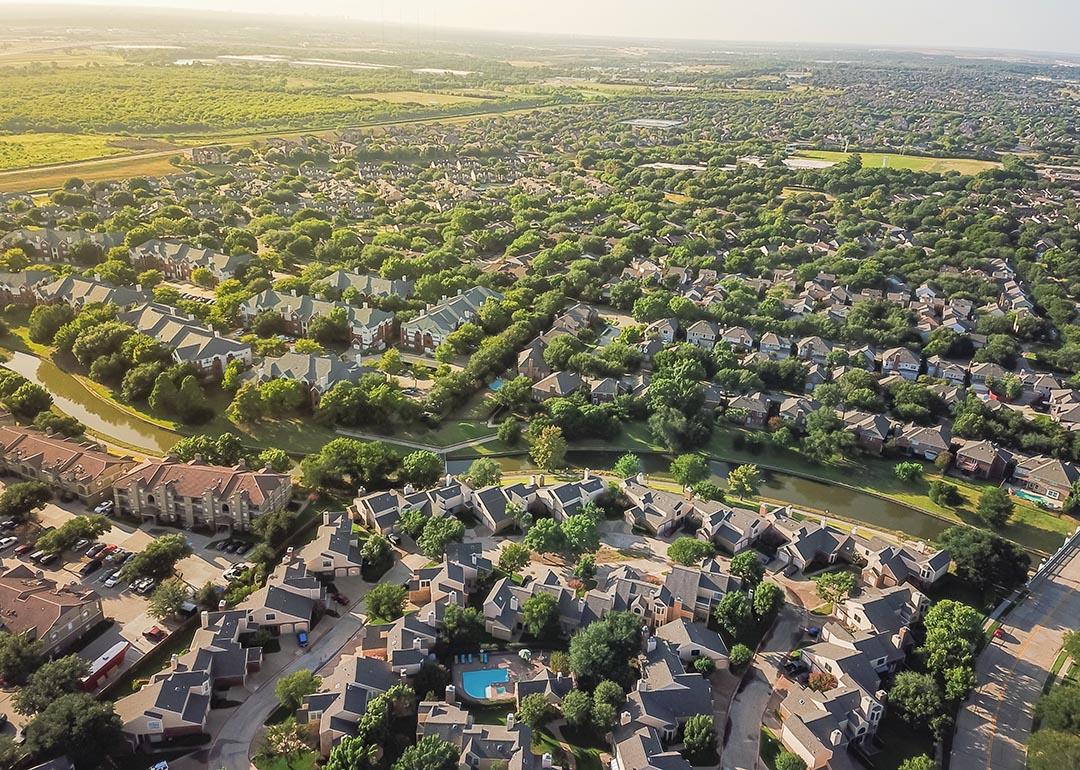
Dallas home prices return to pre-pandemic levels as inventory skyrockets: What it means for buyers
This story was produced by Benzinga and reviewed and distributed by Stacker Media.
Dallas home prices return to pre-pandemic levels as inventory skyrockets: What it means for buyers
The once-hot Dallas housing market is cooling off, with home prices in some areas falling to levels last seen in the early days of the pandemic. The change comes with a surge in housing inventory, Benzinga reports, signaling potential opportunities for buyers but raising concerns for sellers.
Nick Gerli, CEO of Reventure Consulting, pointed to an anecdotal example—a property in Dallas that has seen its value plummet by 25%, bringing it back to April 2021 pricing. While just one example, it is part of a broader trend in Texas and Florida markets, where price declines are becoming more common.
And, while official market statistics still show that Dallas-Fort Worth home prices are down only 3-5% from their peak, the figure could soon become more pronounced. With an explosion in housing inventory, downward pressure on prices is expected to intensify. In June, Dallas home sales saw a sharp 16.8% month-over-month decline, signaling cooling buyer demand amid rising interest rates and persistent inflation. Mortgage lenders for the self-employed are also tightening their requirements, making it even more challenging for non-traditional borrowers to secure financing, which could further dampen demand in the market.
Inventory Surge Reshapes Market
Most notable in Dallas is the surge in housing inventory. According to data cited by Gerli, there are now 24,446 homes actively listed for sale in the Dallas area—a jump from 16,135 homes a year ago and a near tripling from the 8,383 homes on the market three years ago.
The 50% year-over-year increase in listings is the second-highest level Dallas has seen in the past seven years, Gerli said and it's a "signal of downward price pressures" to come.
Texas housing market data tracked by Norada Real Estate Investments confirms the inventory surge, noting that the number of active listings statewide rose by 2.7% in June. While the increase provides more options for buyers, it also poses challenges for sellers, especially as Dallas leads the state's inventory growth, with active listings growing by 141% in certain urban core ZIP codes, according to Gerli.
For buyers, the market shift presents new opportunities. With soaring inventory levels, buyers now have more options, and the increased supply is likely to translate into more negotiating power. The median home price in Dallas fell by 1.7% in June, offering a slight reprieve from the relentless price hikes of the last few years.
However, potential buyers should approach with caution. Data shows a 14.2% month-over-month decline in statewide home sales, with Dallas leading the decline with a 16.8% drop. While increased inventory may favor buyers regarding price flexibility, affordability challenges persist, driven by high mortgage rates and inflation.
Investors instrumental in driving up home prices during the pandemic are now beginning to sell off properties, further contributing to the inventory surge. With buyer demand weakening and inventory outpacing demand, some sellers may need to adjust their expectations.
For those looking to sell, Gerli said that the biggest inventory increases occur within a three to five mile radius of downtown Dallas, where the number of homes on the market has more than doubled year-over-year.
It's important to note that real estate is local, and market conditions can vary from neighborhood to neighborhood. While some areas in Dallas are seeing rapid inventory growth and price declines, other parts of Texas may remain more stable.
For instance, Austin saw a 14.5% decline in home sales in June, but its market remains competitive, with demand still robust in certain areas.
Dallas's situation mirrors trends in other Sun Belt cities, where pandemic-era price appreciation has begun to unwind.



